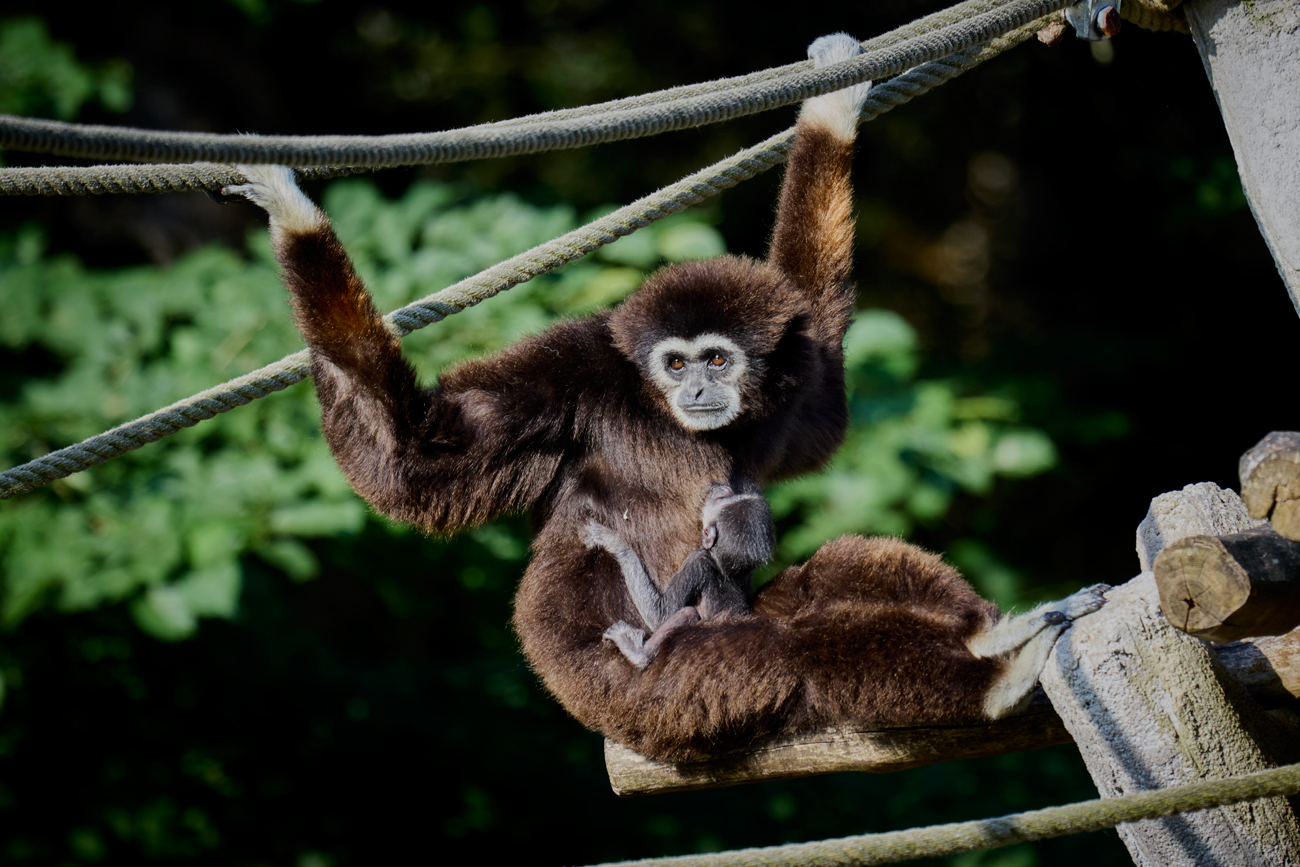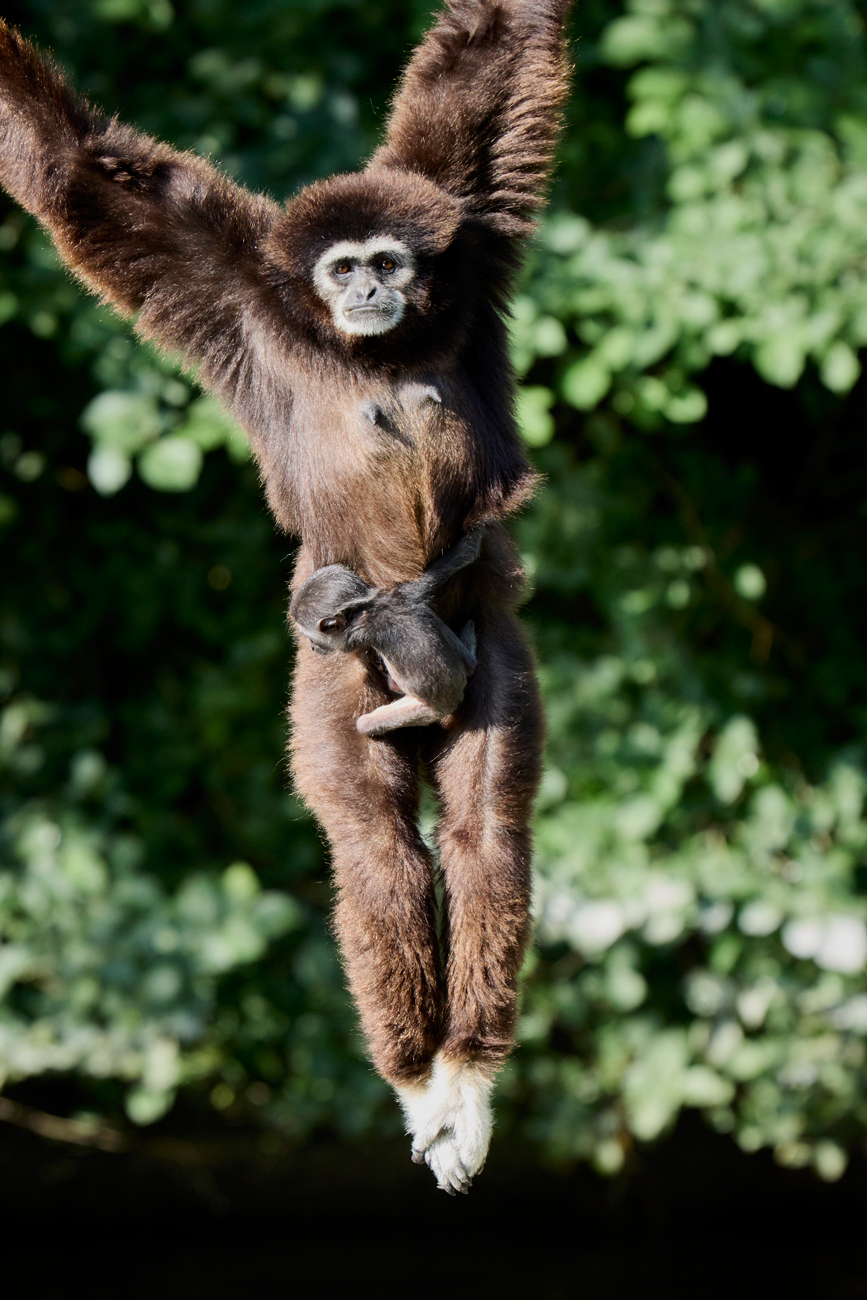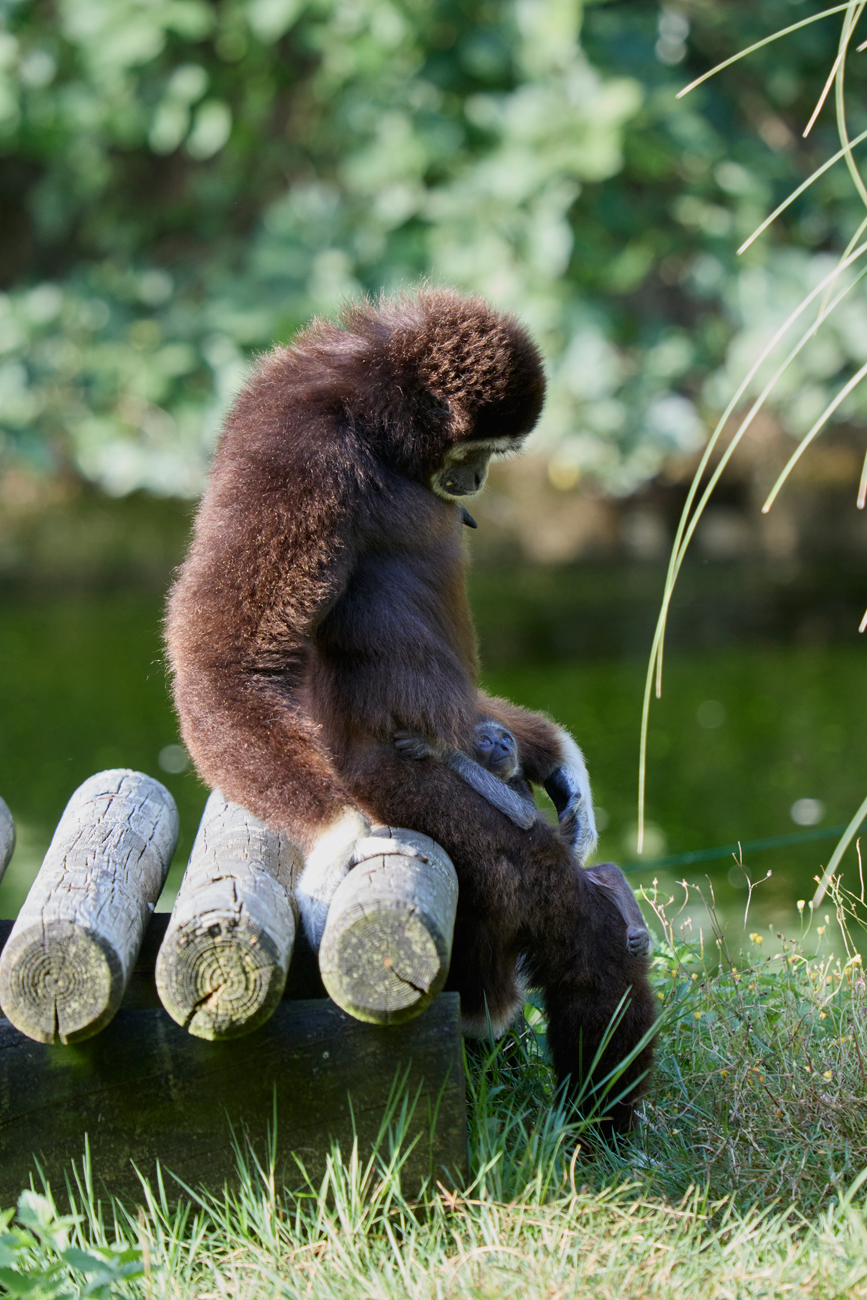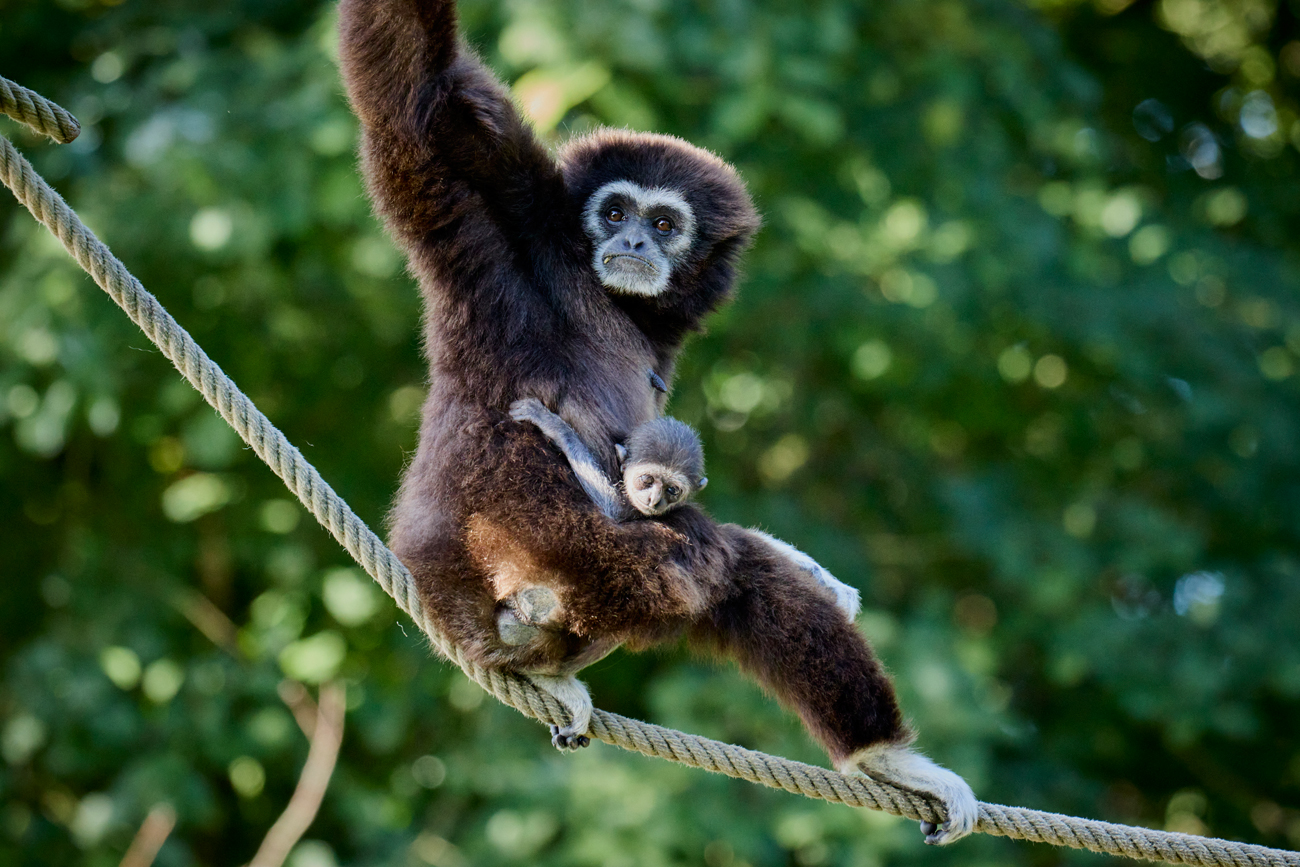Birth of a Lar Gibbon

A little over a month ago, our female lar gibbon (Hylobates lar) gave birth to her first offspring. The infant, whose sex hasn’t been confirmed yet, firmly clings to his mother’s fur and is doing well. This is the very first offspring of this gibbon pair that we formed 18 months ago.

The Lar Gibbon, also known as the White-handed Gibbon, belongs to the genus Hylobates which includes 9 species and 5 subspecies distributed from northern Sumatra to Myanmar. The color of its fur ranges from cream beige to dark brown and is not related to the individual's sex or age.
The species primarily feeds on fruits, which make up more than 50% of its diet, as well as leaves and insects. The young white-handed gibbon starts tasting solid food at 3-4 month-old and will be weaned at around 20 months. However, it will remain with its parents until it reaches sexual maturity at around 7 year-old, making it one of the longest juvenile stages among primates.


Like other gibbons, males and females form a strong pair and sing duet to mark their territory, strengthen their bonds or ward off intruders. Their movement in the trees, called brachiation, involves swinging and moving through the trees by suspending from their arms and using their long limbs to propel themselves.
Listed as "Endangered" on the IUCN Red List, this species is threatened by poaching for its meat and the wildlife trade, as well as by habitat destruction. However, gibbons play a significant role in the ecosystem by spreading the seeds from the fruits they eat and thus contributing to contributing to forest restoration. The Zoo de La Palmyre contributes to the protection of gibbons in the wild by supporting the HURO programme which protects the Western Hoolock Gibbon in India.
